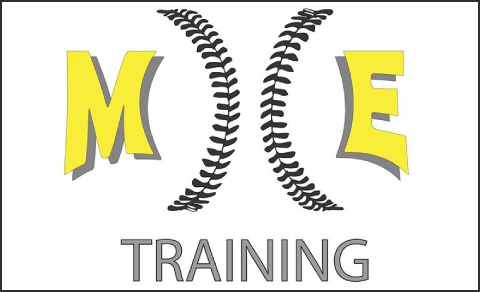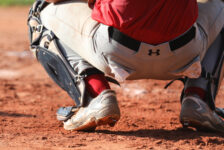Lewis Lupowitz, PT, DPT, CSCS: Orlin & Cohen Orthopedic Group
Its finally here! Baseball season has begun. Athletes have spent all off-season preparing their bodies, arms, and minds for the big day. Yet once the season starts this all seems to be forgotten, but why?
To lift or not to lift. This is something I am asked constantly by my athletes during the season. Many think that performing an in-season training program will stiffen up their arm, decrease their velocity, and limit their endurance as the season progresses. I am here to debunk all these myths and explain the importance of an appropriate in-season arm care program as per evidence-based research. Additionally, I will provide a link to an exercise program that’s proven to mitigate injury risk and increase performance.
In 2021 Uhl et al. 1 performed a clinical review of the literature from 2010 – 202 and found that those who participated in group-based arm care programs focusing on posterior shoulder stretching, full body strength, dynamic mobility and balance were at 50% reduced risk of elbow injury. Most prominently in 2017 Sakata et al 2 studied 307 youth athletes between the ages of 8 & 11, having them perform 9 stretches and 9 strengthening exercises for approximately 20 minutes at a minimum of 1x per week over the course of the year and found in doing so a 49.5% reduced risk of injury. After realizing that their program may be excessive, they reduced it to just 9 activities (5 stretches, 2 dynamic mobility and 2 balance activities) performed again just 1 x per week for a year amongst 237 youth athletes and found 48.5% reduced risk for injury.3
These studies by Sakata demonstrate an increase in total shoulder rotational ROM, non-dominant hip internal rotation ROM, and decreased thoracic kyphosis angle (decreased rounded shoulders / improved posture); all of which we indicated in our last blog post on 1/30/2022 were risks for injury.
Myth 1: Busted! Range of Motion will NOT decrease from exercise programs.
Myth 2: If I am doing strength exercises during the season, I’ll get tired and lose the velo I worked so hard to get all offseason. Andrews, Fleisig and Escamilla4 looked at 34 youth athletes between the ages of 11 & 15 through. Half of them (the training group) performed a 4-week baseball conditioning program 3x per week composed of a sport specific warm-up, resistance training with elastic tubing a throwing program and stretching in which took about 75 minutes. What they found was that those who trained increased their velocity from 56 to 58mph. Escamilla further went on to perform a study in 2 years later5 analyzing high-school athletes and found that those who performed The Thrower’s Ten exercise program (based on electromyographic data that implicate specific exercises to best achieve meaningful muscle activation and strengthening of the shoulder girdle and elbow musculature6,7,8) over the course of 6-weeks demonstrated a 1.7% increase in velocity. Myth 2: Velocity will continue to increase with appropriate strength and conditioning!
Myth 3: I’ll be more tired and not be able to throw as many innings / pitches if I am training during the season. Throwing with arm fatigue is the number 1 risk factor for injury in baseball / softball athletes. Olsen, Fleisig et al.9 noted 36x increased likelihood (3600% increase chance) for injury in doing so. The posterior shoulder endurance test is a valid way to determine fatigue factor in overhead athletes. Kibler et al.10 found that those who performed supervised exercise 3x per week for 5 months improved their scores by 58 repetitions (36 reps in the first 4 weeks) compared to those who did not exercise. Third and final myth: BUSTED!
Overall, we can confirm that arm care programs are essential, and should be performed year-round to maintain range of motion, increase strength, endurance, performance and reduce risk for injury. This past year Wilk, Arrigo and Lupowitz analyzed all the arm care programs mentioned in this post and blended them together to develop the Youth Throwers Ten Exercise Program.10 This program can be found in the references below and is available with PDF handout at all Orlin & Cohen Orthopedic offices and Prospect Sports Performance.
Set up by lying completely on your throwing shoulder. Perform a quarter-turn towards your back so that you are laying on your throwing shoulder blade. Take your non-throwing arm and grab your throwing arm elbow, pull across your body until you feel a stretch in the back of your shoulder.
- Posterior Shoulder Stretching: Modified Cross-Body Stretch
Set up by lying completely on your throwing shoulder. Perform a quarter-turn towards your back so that you are laying on your throwing shoulder blade. Take your non-throwing arm and grab your throwing arm elbow, pull across your body until you feel a stretch in the back of your shoulder.


- Strengthening Exercise: Modified Robbery & Side-Lying External Rotation
Modified Robbery: Start by holding bands with your hands at your sides and palms facing upward. Rotate your arms back, pointing your thumbs backward squeezing your shoulder blades together.

Side-Lying External Rotation: Start lying on your non-working shoulder. Place a towel roll or baseball glove under your working shoulder and hold dumbbell or weighted ball in hand. Start with hand at your stomach and rotate upward until you have the weight positioned in line with your body. (As seen in image above, do not over rotate)

- Posterior Shoulder Endurance Test / Training
Prone Shoulder Abduction: Lie over a table or stability ball with knees fully extended and arms rested towards the floor. Aim to raise your arms into a T position.


References
-
- Matsel KA, Butler RJ, Malone TR, Hoch MC, Westgate PM, Uhl TL. Current Concepts in Arm Care Exercise Programs and Injury Risk Reduction in Adolescent Baseball Players: A Clinical Review. Sports Health. 2021 May-Jun;13(3):245-250. doi: 10.1177/1941738120976384. Epub 2021 Jan 29. PMID: 33514287; PMCID: PMC8083153.
- Sakata J, Nakamura E, Suzuki T, et al. Efficacy of a prevention program for medial elbow injuries in youth baseball players. Am J Sports Med. Published online 2017:460-469. doi:10.1177/0363546517738003
- Sakata J, Nakamura E, Suzuki T, Suzukawa M, Akeda M, Yamazaki T, Ellenbecker TS, Hirose N. Throwing Injuries in Youth Baseball Players: Can a Prevention Program Help? A Randomized Controlled Trial. Am J Sports Med. 2019 Sep;47(11):2709-2716. doi: 10.1177/0363546519861378. Epub 2019 Jul 23. PMID: 31336051.
- Escamilla RF, Fleisig GS, Yamashiro K, Mikla T, Dunning R, Paulos L, Andrews JR. Effects of a 4-week youth baseball conditioning program on throwing velocity. J Strength Cond Res. 2010 Dec;24(12):3247-54. doi: 10.1519/JSC.0b013e3181db9f59. PMID: 21068687.
- Escamilla RF, Ionno M, deMahy MS, Fleisig GS, Wilk KE, Yamashiro K, Mikla T, Paulos L, Andrews JR. Comparison of three baseball-specific 6-week training programs on throwing velocity in high school baseball players. J Strength Cond Res. 2012 Jul;26(7):1767-81. doi: 10.1519/JSC.0b013e3182578301. PMID: 22549085.
- Wilk, KE, Meister, K, and Andrews, JR. Current concepts in the rehabilitation of the overhead throwing athlete. Am J Sports Med 30: 136–151, 2002.
- Reinold MM, Escamilla RF, Wilk KE. Current concepts in the scientific and clinical rationale behind exercises for glenohumeral and scapulothoracic musculature. J Orthop Sports Phys Ther. 2009;39:105-117.
- Reinold MM, Macrina LC, Wilk KE, et al. Electromyographic analysis of the supraspinatus and deltoid muscles during 3 common rehabilitation exercises. J Athl Train. 2007;42:464-469.
- Olsen SJ II, Fleisig GS, Dun S, Loftice J, Andrews JR. Risk factors for shoulder and elbow injuries in adolescent baseball pitchers. Am J Sports Med. 2006;34(6):905-912. doi:10.1177/0363546505284188.
- Wilk KE, Lupowitz LG, Arrigo CA. The Youth Throwers Ten Exercise Program: A variation of an exercise series for enhanced dynamic shoulder control in the youth overhead throwing athlete. IJSPT. 2021;16(6):1387-1395. doi:10.26603/001c.29923











